Bare-Chested George Washington
Perhaps the most scandalous statue of America's first president.
At first glance, the Smithsonian’s bare-chested George Washington statue seems a fine and stately fellow, with little indication of scandal wrapped up beneath the marble folds of his toga. But this unusual depiction of the first American president positively mortified onlookers when it was first displayed in the capital city that bears his name.
Things began innocently enough back in 1832, on the centennial of George Washington’s birthday. Congress wanted to honor the occasion with a permanent shrine to the founding father. A prominent statue of the First Potus in the recently completed Capitol Rotunda seemed like just the thing.
A 27-year-old American sculptor named Horatio Greenough was chosen for the task and sailed to Italy to select the marble and begin work on his prestigious commission. Young Greenough spent eight long years on the project before declaring the piece finito finalmente in 1840.
Problems quickly arose in actually transporting George to his home in the Capitol Rotunda. Twenty-two oxen did the backbreaking work of dragging the 12-ton president to a port in Genoa, where a U.S. Navy ship was waiting to pick it up. When the Navy ship proved too small for the heavy lift, a specially modified commercial vessel was enlisted.
Finally, and at great expense, George disembarked in the Washington Navy Yard, only to be met by an unanticipated and shocked reception. Nobody in the Federal City had expected a semi-nude statue, and Washington’s chiseled musculature and robed garb seemed to them a mockery of the buttoned-up statesman. The founding father’s likeness, modeled on an ancient statue of Zeus, was depicted wearing sandals, cradling a sheathed sword, and pointing toward the sky. Greenough’s counterargument, that apparel of the 1790s already looked ridiculously out of fashion, fell on deaf ears.
The statue’s saga then enters the brief chapter that actually takes place inside the Rotunda. Greenough thought his sculpture’s placement had bad light, and increasingly worried engineers pointed out that the monumental statue was in danger of collapsing through the Rotunda floor, potentially bringing part of the Capitol down with it. A large pedestal was brought out to better distribute the weight, but this failed to solve the problem and George was evicted from his home in the Capitol, cast without a shirt on his back into the east plaza.
But this new locale further scandalized onlookers, many of whom believed Washington’s bare-chested physique looked absurd with pigeons perched on his appendages and snow accumulating on his lap during colder months. Still, this indignity continued for 20 years until a crack was discovered on the statue’s back and the Architect of the Capitol began the annual spectacle of erecting a temporary winter time shed around Washington.
Finally, in 1908, exasperated lawmakers moved the controversial statue once again, this time to the Smithsonian Institution. The Washington Evening Star reported in slightly more diplomatic terms that Congress’ main reason for the change was that the statue “is semi-nude and looks pitiful out in the cold.”
The enormous pedestal, nobly inscribed with “First in War. First in Peace. First in the hearts of his countrymen.” was separately commandeered and embedded in the walls of the new Capitol Power Plant. Later, in 1963, the Washington statue was moved yet again to the new American History Museum, where he resides, shirtless and toga-clad, to this day.
Know Before You Go
It's on the second floor of the American History Museum at the entry of the west wing.
Community Contributors
Added by
Plan Your Trip
The Atlas Obscura Podcast is Back!







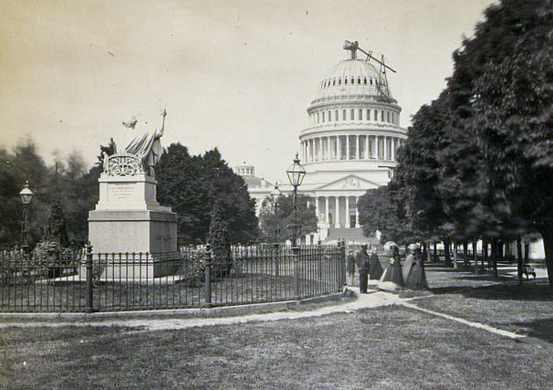
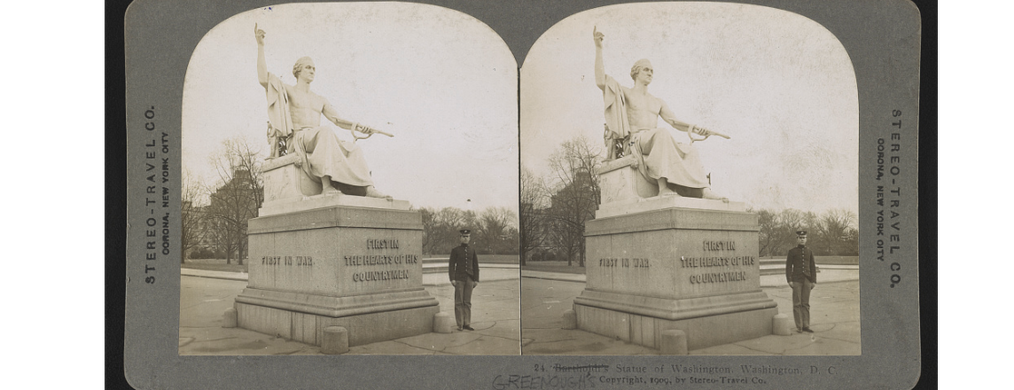

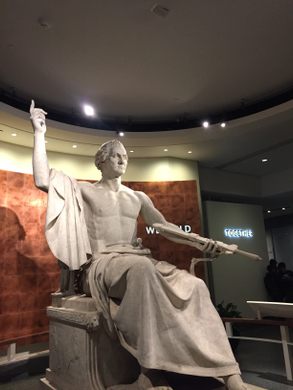



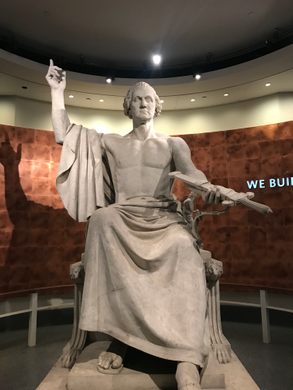



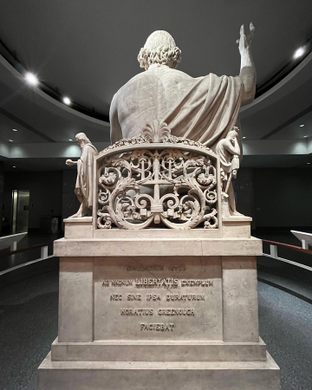
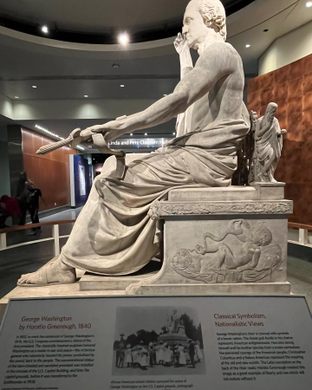

















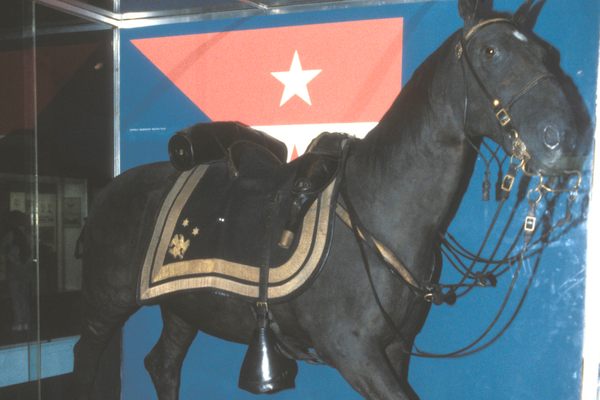
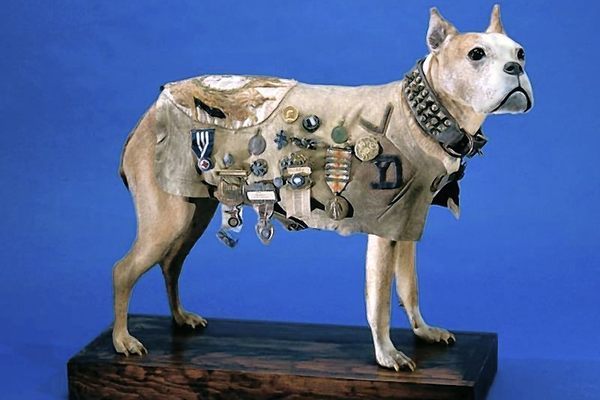

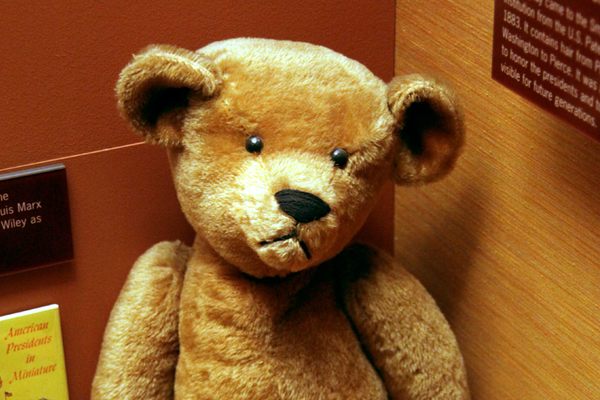
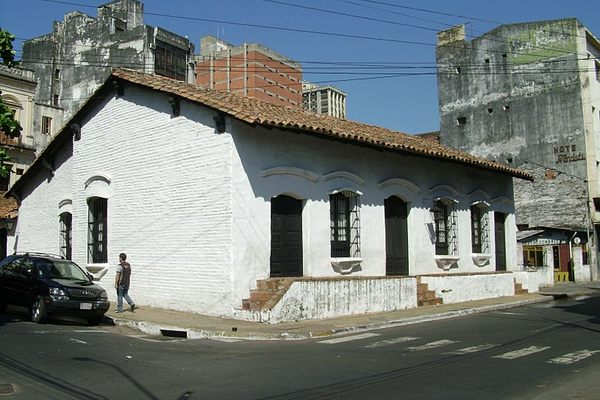




Follow us on Twitter to get the latest on the world's hidden wonders.
Like us on Facebook to get the latest on the world's hidden wonders.
Follow us on Twitter Like us on Facebook